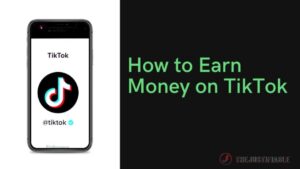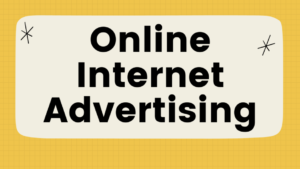Table of Contents
Have you ever wondered if there are ways to make money while you sleep? Imagine waking up each morning to find your bank account has grown overnight, all thanks to systems you’ve set up once. Sounds incredible, doesn’t it?
In this article, we’ll explore life-changing ways to make money while you sleep, giving you practical strategies and actionable tips to build income streams that work for you 24/7. Whether you’re a beginner or looking to expand your current efforts, these methods can help you start earning even while you rest. Let’s dive in!
Effective Affiliate Marketing Strategies

Affiliate marketing is one of the most accessible and rewarding ways to make money while you sleep. By promoting other people’s products or services, you earn a commission for each sale made through your referral link. Let’s explore how to master affiliate marketing for consistent passive income.
What Is Affiliate Marketing and How Does It Work?
Affiliate marketing works by partnering with brands or businesses to promote their products. When someone clicks on your unique affiliate link and makes a purchase, you earn a percentage of the sale. It’s like getting paid for your recommendation—a win-win situation!
Affiliate marketing thrives because it connects brands with engaged audiences. Whether through blog posts, social media, or email campaigns, the key is to align your promotions with your audience’s interests. This creates trust and leads to better conversions.
For example, if you’re into fitness, promoting gym equipment or healthy meal plans could resonate with your followers. The more relevant your recommendations, the higher your earning potential. Start by identifying niches you’re passionate about and where you can add real value.
Remember, affiliate marketing isn’t about pushing products—it’s about offering solutions. When you genuinely believe in what you’re promoting, it shows. Authenticity is your greatest asset in this space.
Finally, consistency is key. Monitor your links’ performance and refine your strategy based on what’s working. With time and effort, affiliate marketing can become a reliable source of income.
Choosing the Right Affiliate Program for Passive Income
The success of your affiliate marketing efforts depends heavily on selecting the right program. Look for programs that align with your niche and audience, offering competitive commissions and reliable payouts.
Start by researching affiliate networks like Flexoffers, Awin, or CJ Affiliate. These platforms host a wide range of products, making it easy to find those that suit your audience. However, avoid spreading yourself too thin. Focus on quality over quantity.
Ensure the program offers tools like banners, tracking links, and performance analytics. These resources can streamline your marketing efforts and maximize your earnings. Some programs even offer recurring commissions for subscription-based products, increasing your potential for long-term passive income.
Before committing, evaluate the reputation of the brand or product. A low-quality product can harm your credibility. Check reviews, customer feedback, and your personal experience with the product before promoting it.
Building trust takes time, but it’s the cornerstone of affiliate marketing. Choose wisely, and you’ll create a sustainable income stream that works while you sleep.
Proven Ways to Increase Affiliate Revenue Overnight
To boost your affiliate earnings, focus on optimizing your strategies. Here are actionable tips that can drive immediate results:
- Content Is King: Create high-value content that seamlessly incorporates affiliate links. Tutorials, reviews, and comparisons work exceptionally well.
- SEO Optimization: Target high-intent keywords to attract ready-to-buy visitors. Tools like SEMrush or Squirrly can help refine your keyword strategy.
- Leverage Social Media: Share affiliate content on platforms like Instagram or Pinterest to reach a broader audience. Use engaging visuals and clear calls-to-action.
- Email Campaigns: Build an email list and nurture your audience with helpful tips and occasional affiliate offers. Automated funnels can turn subscribers into customers without constant effort.
Remember, experimentation is crucial. Test different approaches and analyze performance metrics. This way, you can double down on what works and cut out what doesn’t.
Tools to Automate and Scale Your Affiliate Marketing Efforts
Automation tools can transform your affiliate marketing business into a scalable operation that generates income 24/7. From content scheduling to performance tracking, these tools can save time and boost efficiency.
- Content Management Systems (CMS): Platforms like WordPress make it easy to manage blogs and integrate affiliate links seamlessly. Pair it with plugins like Pretty Links to cloak and track URLs.
- Email Automation Tools: Platforms like Mailmunch or ConvertKit help you set up automated email funnels, ensuring your promotions reach the right audience at the right time.
- Analytics Tools: Use tools like RedTrack to monitor traffic, conversions, and link performance. This data helps fine-tune your campaigns.
- Social Media Schedulers: Tools like Buffer or Hootsuite allow you to schedule and manage posts across multiple platforms, maintaining a consistent online presence.
Investing in the right tools not only enhances your productivity but also positions your affiliate marketing efforts for exponential growth.
Powerful Email Marketing Techniques That Pay

Email marketing is an incredible way to make money while you sleep. With the right strategies, you can set up systems that generate revenue consistently. Let’s dive into actionable techniques to leverage email marketing for passive income.
Setting Up an Automated Email Funnel for Consistent Income
An automated email funnel is your secret weapon for earning money effortlessly. It’s a structured sequence of emails that guide subscribers through a journey, from awareness to purchase, without requiring constant manual effort.
The first step in building a successful funnel is understanding your audience. Think about their pain points and what solutions they’re seeking. Use this insight to craft engaging emails that speak directly to their needs. Each email in the sequence should have a clear goal, whether it’s introducing your product or encouraging a purchase.
Don’t overlook the importance of lead magnets. Offer something valuable, like a free eBook or discount code, in exchange for their email. This not only grows your list but also establishes trust early on. Once they’re in your funnel, nurture them with valuable content before presenting a sales pitch.
I recommend using tools like Moosend or ActiveCampaign to automate your funnel. These platforms let you schedule emails, track performance, and optimize campaigns effortlessly. With the right setup, your funnel becomes a 24/7 sales engine.
Pro tip: Test different email sequences and subject lines to see what resonates best. Small tweaks can lead to significant improvements in conversion rates.
Writing High-Converting Emails That Drive Sales While You Sleep
Your email content is the bridge between subscribers and sales. Writing persuasive, high-converting emails is essential for turning passive income dreams into reality.
Start with an attention-grabbing subject line. People receive countless emails daily, so yours needs to stand out. Use curiosity, urgency, or personalization to capture their interest. For instance, “Struggling with X? Here’s Your Solution!” is far more engaging than a generic headline.
Once they’ve opened your email, keep the content concise and relatable. Highlight the benefits of your offer rather than just its features. For example, instead of saying, “Our course has 10 modules,” emphasize, “Learn actionable strategies to grow your income in weeks!” This approach focuses on what they’ll gain, not just what you’re selling.
Include a clear call-to-action (CTA). Whether it’s “Buy Now,” “Learn More,” or “Claim Your Discount,” make it easy for them to take the next step. Position CTAs prominently and repeat them if necessary to reinforce the message.
Finally, always write with a conversational tone. I believe readers connect more when the email feels like it’s coming from a trusted friend rather than a faceless company. Personal touches can make all the difference.
Top Email Marketing Platforms for Passive Revenue
Choosing the right platform for email marketing can save time and amplify your results. The best platforms provide tools to design, automate, and analyze campaigns effectively.
Platforms like Mailchimp, ConvertKit, and ActiveCampaign offer user-friendly interfaces that make it easy to set up campaigns, even for beginners. For advanced marketers, tools like Klaviyo provide robust features tailored to eCommerce. These platforms integrate seamlessly with online stores, making them ideal for promoting products automatically.
When choosing a platform, consider your needs and budget. I suggest opting for one with automation capabilities, such as pre-built email sequences or tagging features. This way, you can segment your audience based on their preferences and behaviors, personalizing your content for maximum impact.
Pricing is another factor. Many platforms offer free plans for small lists, so you can start without a significant investment. As your list grows, upgrading to a paid plan often unlocks valuable features like advanced analytics and A/B testing.
Ultimately, the platform you choose should align with your goals and make managing campaigns as seamless as possible. With the right choice, your email marketing can run almost on autopilot.
Building a Profitable Email List with Minimal Investment
A strong email list is the foundation of any successful email marketing strategy. The best part? You don’t need a massive budget to build one.
Begin with organic methods to grow your list. Use social media to share lead magnets, such as free guides, checklists, or webinars. Embed signup forms on your website and blog, ensuring they’re visible but non-intrusive. A simple pop-up with a compelling offer can work wonders.
Collaborating with others in your niche is another effective tactic. Partner on giveaways or cross-promotions to attract new subscribers who are genuinely interested in your content. This not only expands your reach but also boosts your credibility.
Once you have a list, nurture it with valuable content. Regular newsletters with tips, insights, or exclusive deals keep subscribers engaged and less likely to unsubscribe. Always respect their time—send emails that deliver value rather than overwhelm.
I suggest reinvesting a portion of your profits into paid ads to scale your list further. Platforms like Facebook and Instagram allow you to target specific demographics, ensuring your ads reach the right audience. This strategy can supercharge your email growth without breaking the bank.
Proven Blogging Methods for Passive Earnings

Blogging is a fantastic way to make money while you sleep. With the right strategies, a well-established blog can become a steady source of passive income. Let’s explore the key methods to turn your blog into a revenue-generating machine.
Choosing a Profitable Niche to Maximize Blog Income
Selecting the right niche is the cornerstone of a successful blog. It influences your audience, content strategy, and income potential. A well-chosen niche aligns with your passion and expertise while meeting audience demand.
To identify a profitable niche, research topics with consistent interest. Tools like Google Trends and Buzzsumo can help you analyze search volume and trends. Opt for niches with low competition but high demand—such as eco-friendly living, remote work, or personal finance.
Think about the problems your audience faces. I suggest focusing on areas where you can provide valuable solutions. For example, a fitness enthusiast might create content around quick workouts or healthy meal prep for busy professionals. This makes your blog both relatable and useful.
Don’t be afraid to niche down further. Instead of general travel content, write about budget-friendly travel tips for families. This helps attract a specific audience that’s more likely to engage with your content and trust your recommendations.
Once you’ve chosen your niche, stick to it. Building authority takes time, but a focused approach ensures your blog resonates with your audience and grows steadily.
Monetization Options for Turning Blogs Into Income Streams
There are numerous ways to monetize your blog, and combining multiple methods often yields the best results. Each option provides unique benefits, allowing you to diversify your income.
One popular choice is affiliate marketing. By promoting relevant products or services, you can earn commissions for each sale through your referral links. For example, if your blog is about technology, recommending gadgets or software can be a natural fit.
Another option is display advertising. Platforms like Monetag allow you to earn money based on the number of impressions or clicks on ads shown on your site. However, be mindful of user experience—avoid overwhelming your readers with excessive ads.
Selling digital products, such as eBooks, printables, or online courses, is also lucrative. These products require an upfront investment of time to create but can generate recurring revenue without additional effort.
If your blog has a loyal following, consider offering premium memberships or exclusive content. Subscribers could gain access to in-depth guides, templates, or even one-on-one consultations. This creates a consistent income stream while adding value for your audience.
Monetization takes experimentation. I recommend starting with one or two methods and expanding as your blog grows.
Strategies to Optimize Blog Traffic for Recurring Revenue
Traffic is the lifeblood of any blog. The more visitors you attract, the higher your potential to make money while you sleep. To optimize traffic, focus on strategies that drive consistent growth.
First, create high-quality content that solves specific problems. People visit blogs to find answers, so ensure your posts are actionable and informative. Use headings, bullet points, and visuals to make your content easily digestible.
Promote your blog on social media platforms where your audience spends their time. For example, food bloggers might find success on Pinterest, while tech enthusiasts might thrive on Twitter. Tailor your strategy to your niche.
Email marketing is another powerful tool. Build a list of subscribers and share new blog posts regularly. This not only increases traffic but also nurtures a loyal community.
Collaborations can also boost traffic. Partner with other bloggers in your niche for guest posts or joint promotions. Sharing audiences introduces your blog to potential readers who already trust similar creators.
Consistency is key. Regularly publishing valuable content builds trust and encourages repeat visits. Over time, this creates a steady flow of traffic that fuels your income streams.
Using SEO to Enhance Blog Earnings Without Ongoing Effort
Search Engine Optimization (SEO) is a game-changer for passive blogging income. It helps your content rank higher on search engines, driving organic traffic long after you’ve hit publish.
Start with keyword research. Identify terms your audience is searching for and include them naturally in your posts. Tools like Ahrefs or Ubersuggest can simplify this process. Focus on long-tail keywords, as they’re less competitive and more specific to user intent.
Optimize your blog posts with on-page SEO techniques. Use the primary keyword in your title, meta description, headings, and throughout the content. However, avoid overloading your text—it should read naturally.
Internal linking is another essential strategy. Link to related posts on your site to keep readers engaged and improve your site’s structure. This also helps search engines understand your content better.
Don’t neglect technical SEO. Ensure your blog is mobile-friendly, fast-loading, and secure (use HTTPS). These factors influence your rankings and user experience, both of which affect earnings.
Finally, track your performance. Tools like Monsterinsights and Sitechecker provide insights into what’s working and where you can improve. Regular tweaks to your SEO strategy can result in long-term traffic growth.
How Dropshipping Can Earn You Money Overnight

Dropshipping offers an incredible way to make money while you sleep. With this business model, you don’t need to manage inventory or handle shipping, making it a low-risk, high-reward option for earning passive income. Let’s break down the steps to succeed in dropshipping.
Understanding Dropshipping and Its Passive Income Potential
Dropshipping is a retail fulfillment method where you sell products without holding inventory. Instead, when a customer makes a purchase, the supplier ships the product directly to them. This means you focus on marketing and customer service while avoiding logistical headaches.
One of the biggest advantages of dropshipping is its low startup cost. You don’t need to invest in large quantities of stock upfront. I suggest starting with a small budget for testing products and scaling as you see results. This makes it accessible to beginners and seasoned entrepreneurs alike.
The potential for passive income lies in the ability to automate much of the process. With the right tools and strategies, your store can run itself, generating revenue even when you’re not actively involved. Choosing evergreen products—items that sell year-round—is crucial to maintain consistent income.
However, competition can be fierce. To stand out, focus on providing an excellent customer experience, from clear communication to fast shipping times. Partnering with reliable suppliers ensures your customers receive their orders on time, which builds trust and encourages repeat business.
Setting Up a Profitable Dropshipping Store With Ease
Building a dropshipping store is simpler than you might think. Platforms like Shopify or BigCommerce provide user-friendly tools to create a professional-looking website. Your store’s design and functionality play a crucial role in converting visitors into customers.
Start by choosing a niche that aligns with your interests and has proven demand. For example, fitness, home decor, or pet supplies are popular categories with consistent sales potential. Research your target audience to understand their preferences and tailor your store’s branding accordingly.
Your product listings should be detailed and appealing. Use high-quality images and write descriptions that highlight the benefits of each item. Rather than focusing solely on features, explain how the product solves a problem or enhances the buyer’s life.
Ensure your website is mobile-friendly. A significant portion of online shopping happens on mobile devices, and a poorly optimized site can lead to missed sales opportunities.
To streamline the process, I recommend integrating apps like Oberlo or Spocket. These tools connect your store with suppliers and automate tasks like inventory updates and order fulfillment, saving you time and effort.
Finding High-Demand Products That Sell While You Sleep
Product selection is the foundation of a successful dropshipping business. The right products attract customers, while the wrong ones can lead to wasted time and money.
To identify high-demand products, research current trends. Use tools like Google Trends, TikTok, or Pinterest to spot what’s gaining popularity. Combine this with market research platforms like AliExpress or SaleHoo to see which items are already selling well.
Opt for products that solve specific problems or cater to niche interests. For instance, a kitchen gadget that simplifies meal prep or a unique pet accessory can quickly capture attention. Avoid oversaturated categories where competition is too high unless you have a unique selling proposition.
Test multiple products before committing. I suggest running small ad campaigns to gauge demand and refine your offerings based on performance. Once you identify a winner, focus your marketing efforts on scaling that product.
Remember, the goal is to create a catalog that balances variety with quality. Having too many items can overwhelm customers, while too few limit your revenue potential. Aim for a curated selection that resonates with your target audience.
Leveraging Automation Tools to Simplify Dropshipping Operations
Automation is the key to making dropshipping a passive income source. With the right tools, you can streamline repetitive tasks and focus on scaling your business.
Order fulfillment is one of the most time-consuming aspects of dropshipping. Tools like Dropified, DSers, or Spocket can handle this for you, automatically forwarding customer orders to suppliers and tracking shipments. This eliminates the need for manual intervention, giving you more freedom.
Marketing automation tools are equally essential. Platforms like Klaviyo or Mailchimp can manage email campaigns, sending personalized promotions or follow-ups to your customers. This helps nurture relationships and drives repeat purchases without constant effort.
Analytics tools like Google Analytics and Shopify reports provide insights into customer behavior. Use this data to optimize your store’s performance, from improving your product pages to refining your ad targeting.
Invest in customer service tools to handle queries efficiently. Chatbots, for example, can provide instant responses to common questions, enhancing the shopping experience while reducing your workload.
With automation, you can focus on growing your dropshipping business rather than getting bogged down in day-to-day operations. The result? A sustainable income stream that works for you 24/7.
Transform Your Skills Through Freelancing

Freelancing is a dynamic way to earn money while leveraging your skills and passions. With the right strategies, you can transition from active work to generating consistent, passive income streams. Let’s explore how to maximize the potential of freelancing for financial freedom.
How to Create a Portfolio That Works for You 24/7
A portfolio is the cornerstone of a successful freelancing career. It’s not just a collection of your work—it’s a tool that showcases your skills and attracts potential clients even when you’re not actively promoting yourself.
To create an impactful portfolio, focus on quality over quantity. Highlight your best work and include a variety of projects that demonstrate your versatility. For example, if you’re a graphic designer, feature designs for branding, social media, and website layouts. This gives potential clients a clear view of your capabilities.
Ensure your portfolio is visually appealing and easy to navigate. Use platforms like Behance, Dribbble, or your own website to create a professional presentation. Include short descriptions of each project, outlining the client’s goals, your approach, and the results achieved.
I suggest incorporating testimonials from past clients. Positive feedback builds trust and reassures potential clients of your reliability. If you’re just starting, offer discounted or free services to a few clients in exchange for honest reviews.
Your portfolio should evolve with your career. Regularly update it with recent work and remove outdated projects. This keeps it fresh and relevant, making it a powerful marketing tool that works for you around the clock.
Building a Client Base That Generates Recurring Income
A steady client base is essential for consistent freelancing income. To achieve this, focus on building relationships and delivering exceptional value.
Start with networking. Join online communities, forums, or social media groups related to your niche. Engage in meaningful conversations and offer insights to establish yourself as an expert. Networking isn’t about hard selling—it’s about building genuine connections that can lead to future opportunities.
I recommend offering retainer agreements to clients. Retainers involve providing ongoing services for a set monthly fee, ensuring a stable income stream. For instance, a writer could offer monthly blog posts or a web developer could provide regular site maintenance.
Another strategy is to upsell services to existing clients. If you’ve designed a website for someone, suggest managing their SEO or creating additional marketing materials. Upselling leverages the trust you’ve already built and increases your earning potential.
Consistent communication is key. Check in with clients regularly, update them on progress, and show genuine interest in their goals. Happy clients are more likely to return with additional projects or refer you to others.
Outsourcing and Scaling Freelance Work for Passive Earnings
Scaling your freelancing business involves moving beyond trading time for money. Outsourcing is a powerful way to achieve this while maintaining quality and expanding your offerings.
Begin by identifying tasks that others can handle effectively. For example, if you’re a content creator, you might outsource research or editing to focus on strategy and client relations. Platforms like Upwork or Fiverr can help you find skilled freelancers to support your workload.
When outsourcing, clarity is crucial. Provide detailed instructions and set clear expectations to ensure the work aligns with your standards. I suggest starting with small tasks to test the freelancer’s capabilities before assigning larger responsibilities.
As you scale, consider creating packages or bundles for your services. This simplifies the sales process and makes it easier for clients to choose your offerings. For instance, a social media manager might offer a package that includes content creation, scheduling, and analytics.
To make freelancing even more passive, develop templates or digital products based on your expertise. These can be sold repeatedly without additional effort, providing an additional income stream.
Scaling doesn’t mean compromising on quality. Balance growth with maintaining the level of service that earned your clients’ trust in the first place.
Platforms That Offer Freelancing Opportunities With Passive Benefits
Choosing the right platforms is critical to freelancing success. These platforms connect you with clients and often provide tools to simplify your workflow, saving time and effort.
Upwork, Fiverr, and Toptal are among the most popular options for freelancers in various fields. Each caters to different client types and project scopes. For instance, Upwork is ideal for long-term projects, while Fiverr works well for quick, task-based gigs.
Specialized platforms like 99designs for designers or ProBlogger for writers can help you find niche-specific opportunities. These sites often attract clients looking for experts, which means you can command higher rates.
I recommend using LinkedIn as a freelancing platform. Optimize your profile with a strong headline, detailed experience, and links to your portfolio. Regularly share industry insights to showcase your expertise and attract potential clients organically.
For those looking to transition into more passive freelancing, platforms like Gumroad or Etsy allow you to sell digital products like templates, presets, or eBooks. This creates an additional income stream that doesn’t require constant client interaction.
Remember, each platform has its own audience and features. Experiment to find which works best for your skills and goals. With persistence, you can transform freelancing into a consistent, rewarding income source.
Create Online Courses for Long-Term Earnings

Creating online courses is a rewarding way to share your expertise while building a steady stream of passive income. With the right strategies, your courses can generate revenue continuously, helping you make money while you sleep.
Selecting a Course Topic That Generates Demand Continuously
The success of your online course starts with choosing the right topic. A well-selected topic addresses a persistent problem or fulfills a desire, ensuring ongoing demand.
Begin by identifying your expertise. Think about areas where you have knowledge or skills that others might want to learn. For instance, if you’re skilled in graphic design, you could create a course on mastering Adobe Illustrator or designing effective logos.
Research your target audience to understand their challenges. Tools like Google Trends, Quora, or niche forums can reveal what people are searching for. Look for topics with consistent interest over time rather than fleeting trends to ensure long-term demand.
I recommend validating your course idea before investing time in creation. This can be as simple as surveying your audience or running a small ad campaign to gauge interest. Positive feedback is a strong indicator that your course has potential.
When selecting a topic, ensure it’s narrow enough to stand out but broad enough to attract a substantial audience. A course on “Healthy Meal Prep for Busy Parents” might perform better than a general course on cooking because it targets a specific need.
Platforms to Host and Automate Your Online Courses
Choosing the right platform to host your online course is essential for a smooth experience for both you and your students. The best platforms offer automation features that minimize your workload and maximize your revenue.
Platforms like Teachable, Kajabi, and Thinkific are popular options. They provide tools to create, host, and sell courses, along with features like payment processing and student management. These platforms are user-friendly and allow you to focus on content creation rather than technical setup.
For those who prefer complete control, hosting your course on your own website is another option. I suggest using WordPress with plugins like LearnDash or LifterLMS. While this requires more initial setup, it gives you full ownership of your content and eliminates platform fees.
Consider platforms that include marketing tools. Udemy, for instance, promotes courses to its large user base, though it takes a percentage of your earnings. This can be a great way to gain exposure, especially if you’re just starting.
Automating processes like enrollment, email reminders, and course delivery is a game-changer. Students can sign up, access materials, and complete lessons without requiring your active involvement. This makes your course a truly passive income source.
Marketing Your Course for Evergreen Income Potential
Once your course is ready, effective marketing ensures it reaches the right audience and generates consistent sales. Evergreen marketing strategies are key to maintaining steady income over time.
Content marketing is a powerful way to promote your course. Write blog posts, create YouTube videos, or record podcasts related to your course topic. Use these platforms to share valuable insights while subtly directing your audience to your course.
Social media advertising is another effective strategy. Platforms like Facebook and Instagram allow precise targeting, ensuring your ads reach users who are most likely to benefit from your course. Start with a small budget and refine your campaigns based on performance.
I believe building an email list is one of the most valuable marketing tactics. Offer a free resource, like a mini-course or a guide, to encourage sign-ups. Nurture your subscribers with regular, helpful content before introducing your course as the ultimate solution to their problems.
Don’t underestimate the power of partnerships. Collaborate with influencers or bloggers in your niche to expand your reach. Their endorsement can significantly boost your credibility and attract more students.
An evergreen marketing funnel, like an automated email sequence, ensures your course continues to sell even when you’re not actively promoting it. Set it up once, and it will work for you around the clock.
Tips for Keeping Your Course Relevant Without Active Effort
An outdated course can quickly lose its appeal, but updating it doesn’t have to be time-consuming. With a few proactive strategies, you can keep your course relevant while maintaining its passive income potential.
Focus on creating content that stands the test of time. Instead of covering trends, teach foundational principles that remain valuable regardless of industry changes. For example, a course on “Time Management for Remote Workers” will likely stay relevant for years.
I suggest including evergreen materials like checklists, templates, or frameworks. These resources enhance your course’s value and require little to no updates. If trends are unavoidable, offer bonus modules that can be updated without overhauling the entire course.
Monitor student feedback regularly. Reviews and comments can reveal areas that need improvement or additional content. Addressing these suggestions shows you care about your students’ success and improves your course’s reputation.
Automate updates when possible. If your course includes links to external resources, use tools that alert you when those links change or become outdated. This saves time and ensures your materials stay current.
Regularly promote your course to new audiences through collaborations, ads, or seasonal offers. Consistent exposure keeps your course top-of-mind for potential students and ensures a steady stream of income.
Selling Digital Products for Passive Profits

Selling digital products is an excellent way to create passive income streams. With minimal overhead and the potential for infinite scalability, digital products allow you to make money while you sleep. Let’s explore how to maximize this opportunity.
Types of Digital Products That Sell Well While You Sleep
The key to succeeding with digital products is offering items that provide value and solve problems. From educational resources to creative tools, the possibilities are endless.
EBooks remain a top choice for passive income. They’re relatively easy to create and cater to a wide audience. I suggest choosing topics that align with your expertise, such as “10 Strategies for Efficient Time Management” or “A Beginner’s Guide to Photography.”
Templates and planners are another popular option. Business owners and creators often look for ready-made solutions, such as social media templates, budget planners, or resume designs. These products save time, making them highly appealing.
If you’re tech-savvy, software or app-related products like plugins, themes, or mobile app templates can generate significant revenue. Creative professionals can sell design assets like fonts, stock photos, or vector illustrations.
Courses and tutorials are highly sought-after as well. If you have specialized knowledge, consider packaging it into a digital course or video series. These products are often priced higher, boosting your earnings per sale.
Explore niches that align with your skills and interests to create products that resonate with your target audience. This focus ensures sustained demand and steady sales.
Creating and Designing Digital Products With Ease
Creating digital products can seem daunting, but with the right tools and approach, it’s simpler than you might think. The key is to focus on quality and usability.
Start with an idea that fills a gap in the market. Research your audience’s pain points and preferences to ensure your product meets their needs. Tools like surveys or social media polls can help you gather insights directly from your target market.
Use accessible software to bring your ideas to life. For example, Canva is perfect for designing templates, while Scrivener or Google Docs work well for writing eBooks. If you’re creating an online course, platforms like Teachable or Thinkific streamline the process.
I recommend keeping your product visually appealing. A clean, professional design boosts credibility and enhances the customer experience. If design isn’t your strength, hiring a freelancer or using pre-made templates can save time.
Once your product is ready, test it with a small group of users to gather feedback. This step ensures you address any issues before launching it to a broader audience. A polished product builds trust and encourages repeat purchases.
Using Marketplaces to Automate Digital Product Sales
Marketplaces are a game-changer for selling digital products. They connect you with a global audience and handle much of the logistics, allowing you to focus on product creation and marketing.
Etsy is a popular platform for selling templates, printables, and other creative assets. It’s beginner-friendly and comes with built-in traffic, making it ideal for those starting out. Similarly, Gumroad caters to creators looking to sell eBooks, courses, or software.
For more niche products, explore specialized platforms. For example, Envato Market is great for design assets and WordPress themes, while Udemy is perfect for hosting and selling courses. These platforms have established customer bases that can increase your visibility.
I suggest leveraging automation tools offered by these marketplaces. Features like instant downloads and automatic customer communications make the process seamless. Pairing this with pricing strategies, such as offering bundles or discounts, can further boost sales.
Marketplaces often take a small percentage of each sale, but the trade-off in convenience and exposure is worth it. Explore different platforms to find the best fit for your product type and goals.
Leveraging Social Media to Promote Digital Products Passively
Social media is a powerful tool for promoting digital products, and when used strategically, it can drive consistent sales with minimal ongoing effort.
Start by creating engaging content that highlights the value of your products. Share tips, tutorials, or behind-the-scenes insights to spark interest. For example, if you’re selling budgeting templates, post short videos showing how they can simplify financial planning.
Platforms like Instagram, Pinterest, and TikTok are particularly effective for digital product promotion. Pinterest, in particular, is a great choice for evergreen content, as pins often continue driving traffic months after they’re posted.
I recommend automating your social media efforts using schedulers like Buffer or Later. Plan your posts in advance to maintain consistency without dedicating daily time to content creation.
Collaborating with influencers or affiliates can also boost your reach. Find partners who share your target audience and offer them a commission for promoting your products. This approach builds credibility and exposes your products to new potential customers.
To keep the momentum going, create limited-time offers or exclusive discounts for your social media followers. These tactics encourage immediate action while fostering loyalty among your audience.






